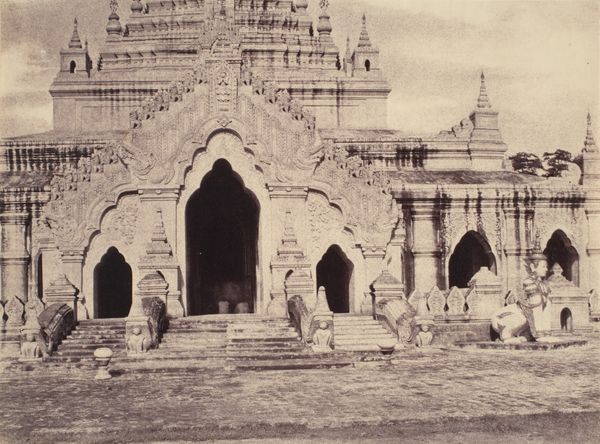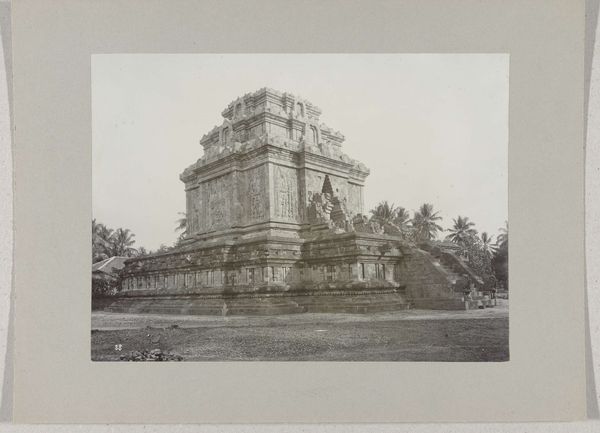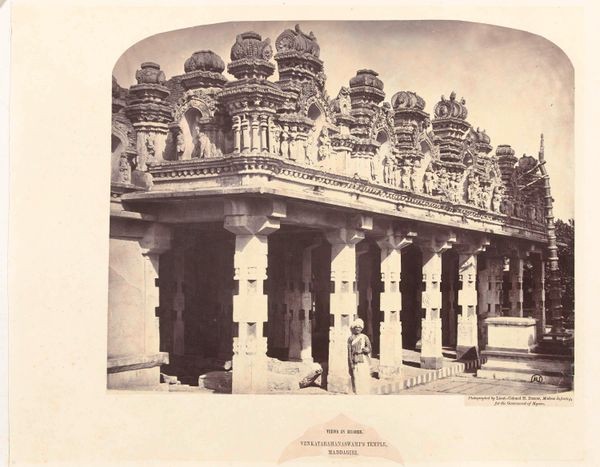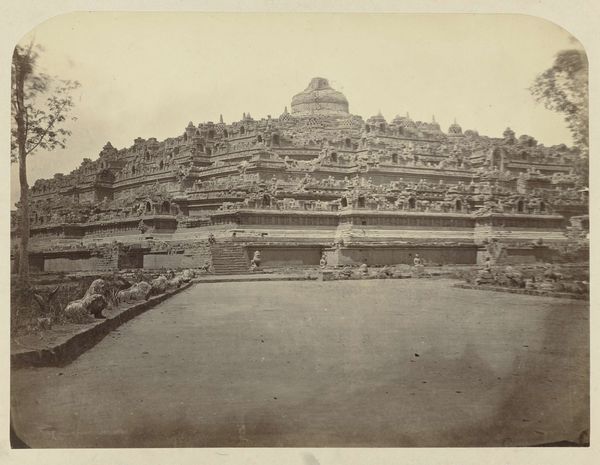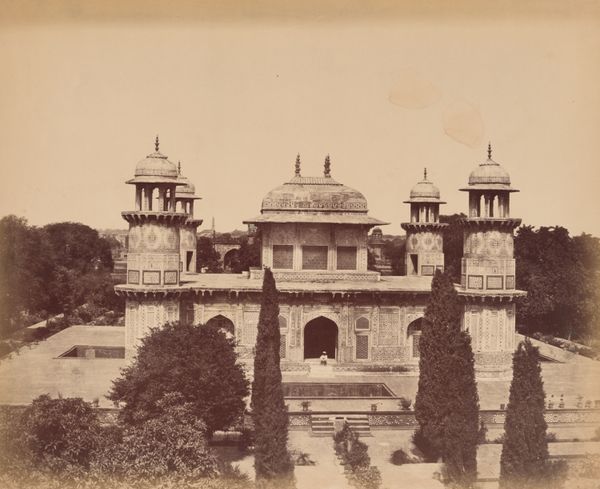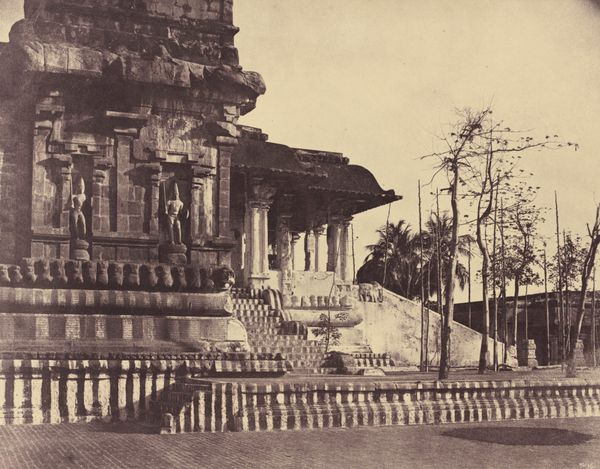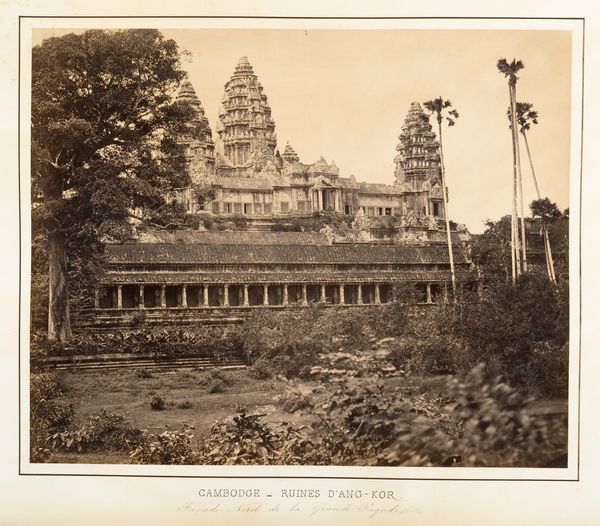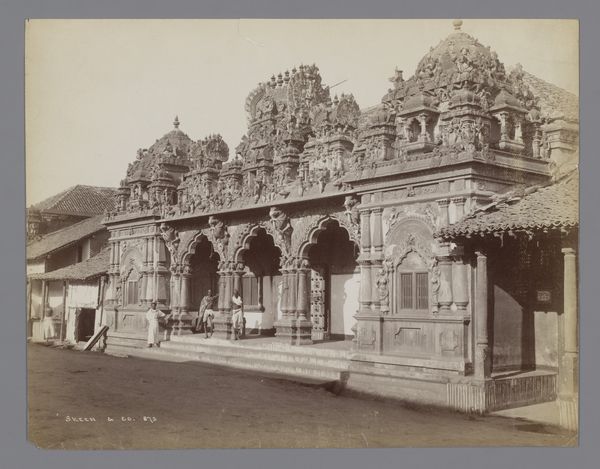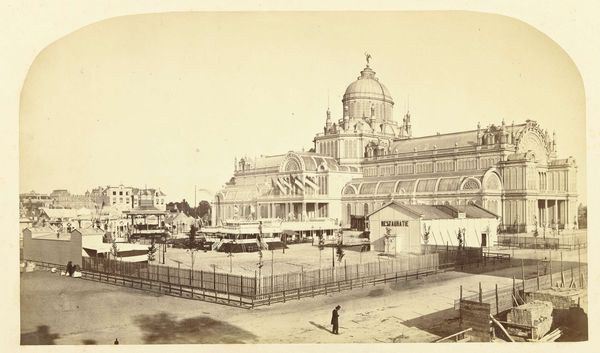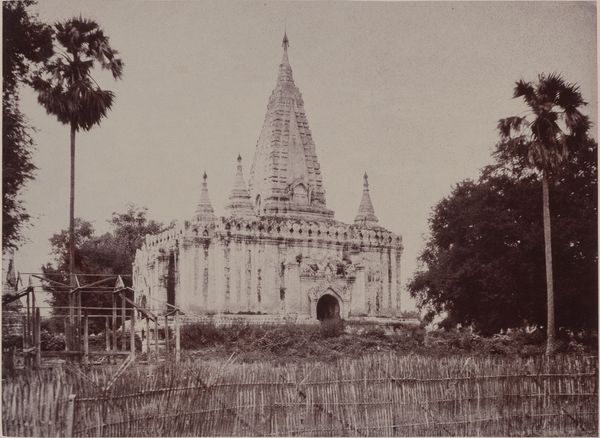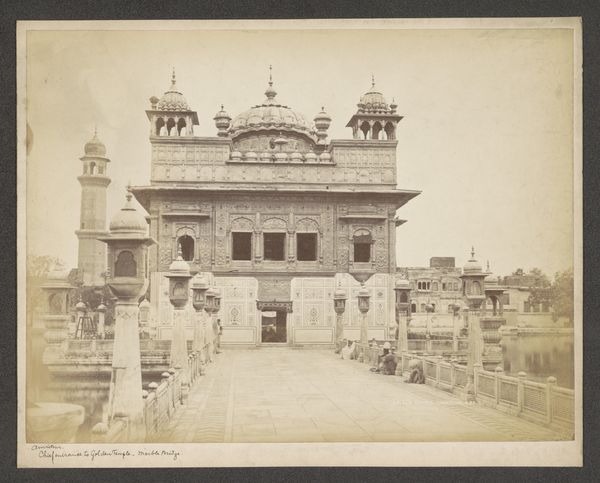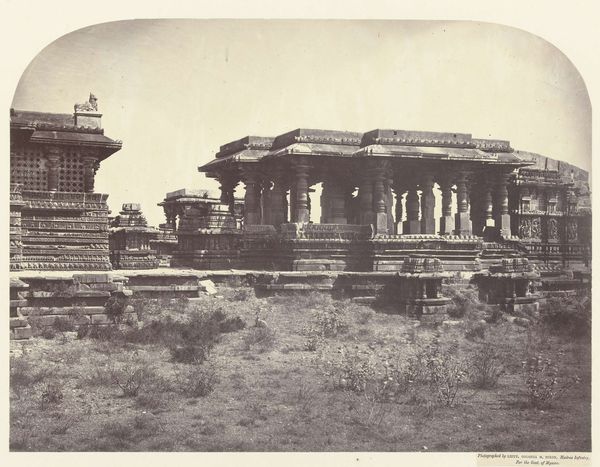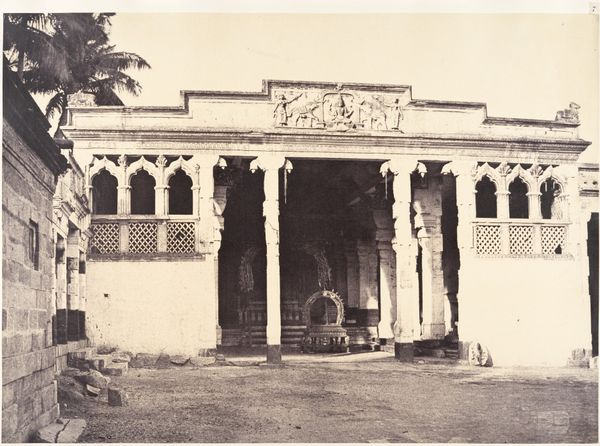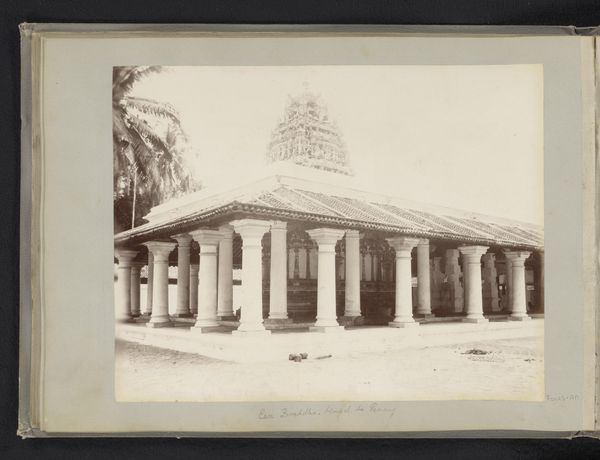
print, photography
# print
#
landscape
#
photography
#
ancient-mediterranean
#
orientalism
#
19th century
#
building
Dimensions: Image: 26 x 37.5 cm (10 1/4 x 14 3/4 in.) Mount: 45.2 x 56.2 cm (17 13/16 x 22 1/8 in.)
Copyright: Public Domain
Linnaeus Tripe made this photograph of the Teppa-kulam, or tank, at Tanjore, India, using the wet collodion process. This technique, popular in the mid-19th century, involved coating a glass plate with a light-sensitive chemical emulsion right before exposure in the camera. The resulting print captures an impressive amount of detail, from the ripples on the water's surface to the intricate architecture of the temple in the background. But think about the labor involved. Because the collodion had to remain wet during the entire photographic process, Tripe had to carry a portable darkroom with him, preparing and developing his plates on-site. This points to photography's status at the time – not just as a means of documentation, but as a physically demanding activity. Tripe was an officer in the British East India Company’s army, and his photographic work served the interests of the colonial project. So, even the most beautiful image can also be understood as a product of its time, enmeshed in social and political realities.
Comments
No comments
Be the first to comment and join the conversation on the ultimate creative platform.
